Swimming Breaststroke
Contrary to popular belief breaststroke is probably the most difficult of all strokes to master. The flat position of your body makes you like a barge moving through water, so to move fast you need to make yourself as streamlined as possible and this makes the timing of the stroke difficult to get right.
Like butterfly, breaststoke is a rhythm stroke - get it right and you flow through the water - get it wrong and you're fighting all the way.
It is the one stroke where the propulsive element of the arms and legs work independently of each other. So, your arms make their propulsive movement, while your legs recover, dive inyo==to the streamlined position and then your legs kick.
With both we need to remain as streamlined as possible, minimising drag all teh time. We also need to keep pressing our chest into the water - to keeps the hips as high as possible - narrowing our arms and legs, keeping the angle our legs make with our body to a minimum. The video to the right explains minimising drag.
The Breatstroke Action
If we look at a good breaststroker in action we can see the main elements of the stroke and the relative timing of each movement:
- At the end/beginning of a stroke the legs are snapped together with feet pointed. To begin the stroke the hands ..
- ... scull out beyond shoulder width with no propulsion, as any pressure would only produce upward movement.
- ... Then the elbows bend so you can use the whole of the lower arm and hand to hold the water.
- Propulsion comes by holding the elbows high and moving the hands round and in, while the legs remain streamlined.
- The arms accelerate throughout the stroke and when the elbows are level ...
- ... with the chest both the hands and the elbows are driven together.
| 1 | 2 |
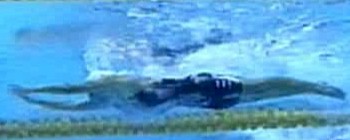 |
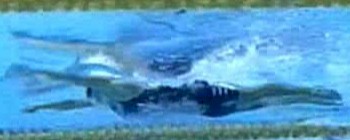 |
| 3 | 4 |
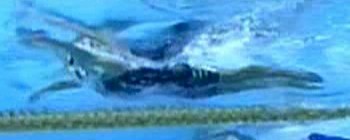 |
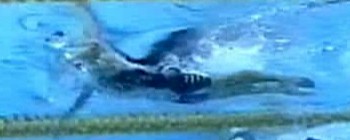 |
| 5 | 6 |
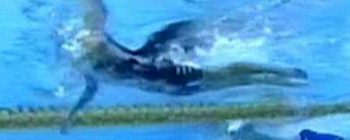 |
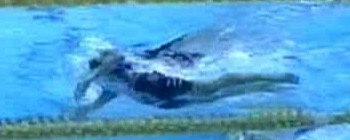 |
| 7 | 8 |
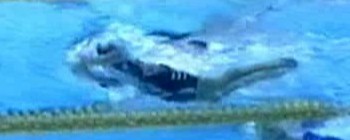 |
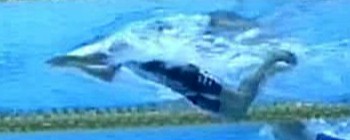 |
| 9 | 10 |
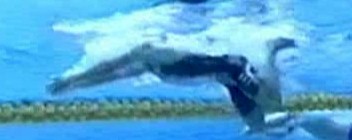 |
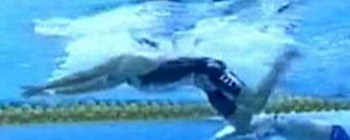 |
| 11 | 12 |
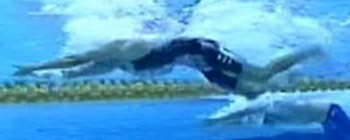 |
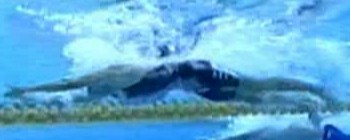 |
- When the hands meet the legs begin to break at the knee and the feet are drawn towards ...
- ... the buttocks. The toes turn in towards each other and the hands extend in a streamlined
- ... position both forward and downwards. The feet remain pointing back until the arms are fully extended.
- At which point the feet are turned out to present the instep to the water behind and are ...
- ... driven backwards at a very fast rate. If you trace this movement the actual shape they would draw would be.
- ... narrow oval. The feet and legs are snapped together while the arms remained streamlined.
Short Distance v's Long Distance
One of the problems with breaststroke is that the time spent in the glide phase of the stroke varies dramatically, dependent on whether you're swimming short distance sprints or longer distances.
We produced the video on the right to help you understand this difference. With swimmers like Adam Peaty now swimming 50m breaststroke in around 26 seconds the differences between sprinting and longer distance speed swimming are becoming quite pronounced.